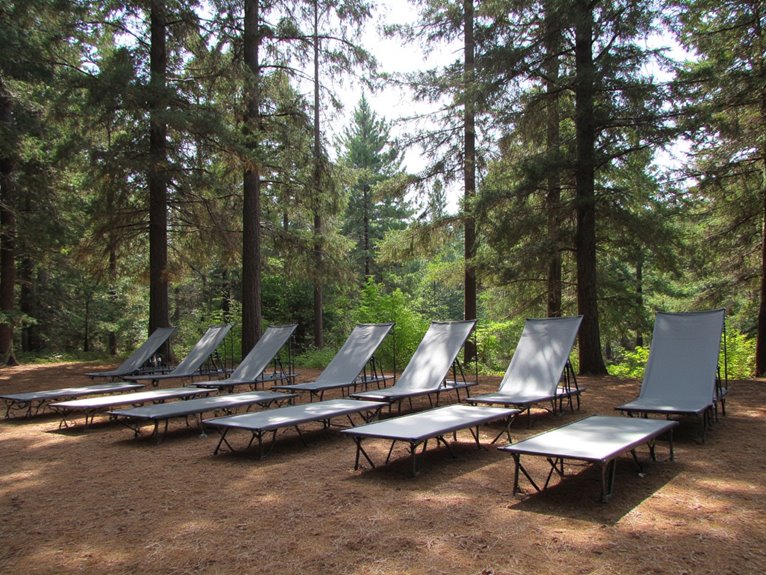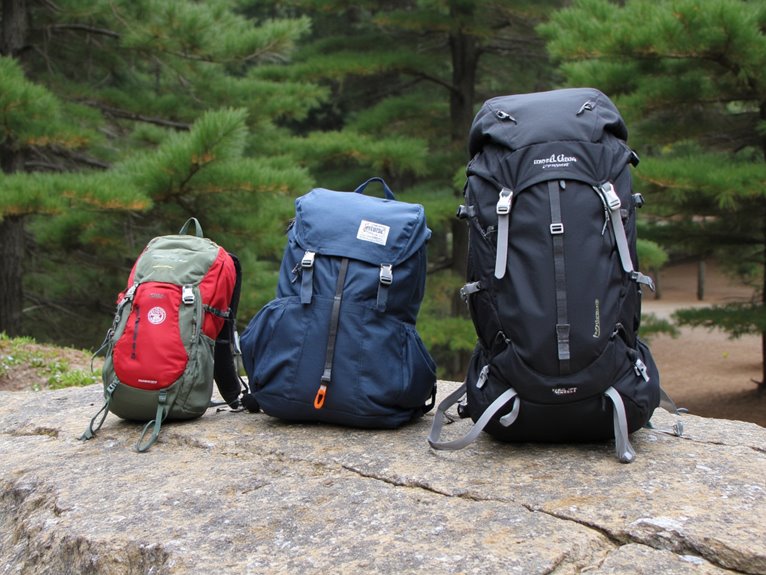What Is the Best Length for a Solo Canoe?
The ideal length for a solo canoe depends on a combination of factors, including paddling style, skill level, water type, and personal preferences. Aggressive paddlers may prefer shorter canoes (10-12 ft) for quicker turns, while relaxed paddlers opt for longer canoes (14-16 ft) for stability and tracking. Novice paddlers require more stable vessels (12-14 ft), while experienced paddlers can handle more responsive canoes (15-17 ft). By considering these factors, solo canoeists can find the perfect balance of stability, maneuverability, and performance, ultimately leading to a more enjoyable and fulfilling experience on the water, and there's more to discover in finding the perfect fit.
We are supported by our audience. When you purchase through links on our site, we may earn an affiliate commission, at no extra cost for you. Learn more. Last update on 7th January 2026 / Images from Amazon Product Advertising API.
Determining Your Paddling Style
Your paddling style, whether aggressive and athletic or relaxed and leisurely, plays a significant role in determining the ideal length of a solo canoe. Aggressive paddlers who prioritize speed and efficiency may benefit from a shorter canoe, typically between 10-12 feet, which allows for quicker turns and more responsive maneuverability. On the other hand, those who prefer a more relaxed pace may opt for a longer canoe, often between 14-16 feet, providing greater stability and tracking. Understanding your paddling style is vital in selecting the perfect length for your solo canoe, as it directly impacts performance, handling, and overall paddling experience. By considering your paddling style, you can choose a canoe that aligns with your needs and preferences, ensuring a more enjoyable and fulfilling experience on the water.
Considering Your Skill Level
As paddlers progress in their solo canoeing journey, their skill level becomes a critical factor in determining the ideal length of their canoe, as a novice paddler may require a more stable and forgiving vessel, whereas an experienced paddler can handle a more responsive and maneuverable one. A shorter canoe, typically between 12-14 feet, is often recommended for beginners, as it provides greater stability and ease of handling. Conversely, experienced paddlers may opt for a longer canoe, often between 15-17 feet, which offers improved tracking and responsiveness. When selecting a canoe, it's essential to weigh your options and factor in your skill level and the type of paddling you plan to do, ensuring a harmonious match between paddler and vessel.
Water Type and Conditions
When paddling solo canoes through various water types and conditions, paddlers must consider how the canoe's length will perform in response to different aquatic environments, from calm lakes to turbulent whitewater rapids. The canoe's length will substantially impact its stability, maneuverability, and overall performance in different water conditions. For instance, a shorter canoe might excel in whitewater rapids, where agility and quick turns are vital, while a longer canoe might be more suitable for calm lakes, where stability and tracking are essential. Understanding the water type and conditions you'll be paddling in is vital in determining the ideal canoe length for your solo adventures. By considering these factors, you can choose a canoe that perfectly suits your paddling needs and preferences.
Short Canoes for Maneuverability
In environments where agility and quick responses are paramount, such as traversing tight river bends or dodging obstacles, a shorter solo canoe can prove to be an ideal companion, offering unparalleled maneuverability in tight spaces. With a shorter length, paddlers can quickly pivot and adjust their trajectory, making it easier to navigate through narrow waterways and respond to changing conditions. A shorter canoe's reduced momentum also allows for more precise control, enabling paddlers to make sharp turns and quick corrections with confidence. This makes short canoes an excellent choice for paddlers who frequent narrow rivers, tight streams, or obstacle-laden whitewater.
Mid-Length Canoes for Versatility
Mid-length canoes, typically ranging from 14 to 16 feet in length, offer a sweet spot of versatility, striking a balance between stability and maneuverability. This balanced design enables paddlers to enjoy a stable turning radius, making it ideal for traversing winding waterways and exploring smaller lakes. Additionally, mid-length canoes often boast a balanced weight capacity, allowing solo paddlers to carry a moderate amount of gear without sacrificing performance. In addition, mid-length canoes are suitable for cruising and piloting through tranquil waters.
Balanced Weight Capacity
Versatility is the hallmark of mid-length canoes, which strike a delicate balance between stability and maneuverability, making them an ideal choice for solo paddlers who need to navigate a variety of water conditions. One key advantage of mid-length canoes is their balanced weight capacity, allowing them to accommodate a range of paddler weights and gear loads. This is particularly important for solo paddlers, who often need to carry camping gear, fishing equipment, or other essentials on their trips. With a balanced weight capacity, mid-length canoes can handle varying loads without sacrificing performance or stability, making them an excellent choice for solo paddlers who need a reliable and versatile canoe.
Stable Turning Radius
Solo paddlers seeking to traverse winding rivers and tight waterways will appreciate the stable turning radius of mid-length canoes, which enables them to make sharp turns with confidence and precision. This versatility is particularly beneficial when traversing narrow channels, where quick turns are essential to avoid obstacles. Mid-length canoes, typically ranging from 14 to 16 feet, strike a balance between stability and maneuverability, allowing solo paddlers to effortlessly pivot and adjust their course. With a shorter waterline and more pronounced rocker, mid-length canoes can carve through tight spaces, making them an excellent choice for paddlers who frequent serpentine waterways or enjoy exploring hidden coves and inlets.
Long Canoes for Speed and Efficiency
When it comes to covering long distances efficiently, a longer canoe, typically measuring between 18 and 23 feet in length, can be a solo paddler's best friend, providing the speed and glide necessary to devour miles of water with minimal effort. These longer canoes allow solo paddlers to maintain a steady pace without sacrificing energy, making them ideal for marathon racing, long-distance touring, or simply exploring vast bodies of water. Additionally, their increased waterline length enables them to track straighter, reducing the need for frequent corrections and allowing paddlers to focus on their stroke. With proper technique, a longer canoe can be a powerful tool for solo paddlers seeking to maximize their on-water experience.
Portability and Storage Concerns
While longer canoes excel at providing speed and efficiency, they often come with trade-offs regarding portability and storage, making them more challenging to transport and stow away when not in use. This can be a significant drawback for solo canoeists who need to weigh the logistics of transporting their vessel. A longer canoe may require a larger vehicle or specialized trailer, adding complexity and expense to the equation. In addition, storage becomes a concern, as longer canoes may not fit in standard storage facilities or may require custom accommodations. These factors are vital for solo canoeists who value convenience and ease of use.
Balancing Stability and Performance
As a solo canoeist, finding the ideal balance between stability and performance is critical, as a canoe that is too stable may sacrifice speed, while one that is too fast may compromise stability. A longer canoe generally provides more speed, but may be less stable, especially for novice paddlers. Conversely, a shorter canoe may be more stable, but slower. The ideal length will depend on the paddler's skill level, paddling style, and personal preferences. A mid-range length, around 14-15 feet, often provides a good balance between stability and performance. However, this can vary depending on the canoe's design, hull shape, and material. By considering these factors, solo canoeists can find the perfect balance for their needs.
Finding Your Ideal Canoe Length
Finding Your Ideal Canoe Length
In terms of finding your ideal canoe length, considering your paddling experience, body type, and the type of water you'll be paddling on is essential. For beginners, a shorter canoe (10-12 feet) provides stability and ease of handling. Taller or heavier paddlers may prefer a longer canoe (13-15 feet) for added buoyancy and stability. If you'll be paddling on calm waters, a longer canoe can increase speed and efficiency. Conversely, shorter canoes are better suited for maneuvering tight spaces and whitewater. By considering these factors, you can find a canoe length that optimizes your paddling experience.



